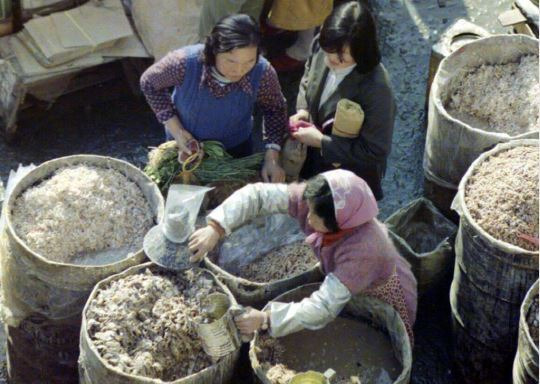[News Focus] Working age population declines by 750,000 over 4 years
이 글자크기로 변경됩니다.
(예시) 가장 빠른 뉴스가 있고 다양한 정보, 쌍방향 소통이 숨쉬는 다음뉴스를 만나보세요. 다음뉴스는 국내외 주요이슈와 실시간 속보, 문화생활 및 다양한 분야의 뉴스를 입체적으로 전달하고 있습니다.

SEJONG -- South Korea is heading toward a labor shortage in the wake of record-low fertility rates and the rapidly aging population.
The baby boomer generation -- defined in Korea as those born between 1955-1963 -- is beginning to enter retirement age, with the working-age population classed as those aged 15-64.
According to the Ministry of Interior and Safety, the working age population fell to 71.4 percent of the total in December, the lowest in at least 12 years.
The portion was 72.4 percent when the government officially started compiling the data.
The nation’s working age population, which peaked at 73.4 percent in January 2012, has continued to drop -- to 73.1 percent in December 2016, 72.7 percent in December 2017, 72.4 percent in December 2018 and 72 percent in December 2019.

During the December 2016-December 2020 period, the number of working age people in South Korea fell from 37.78 million to 37.02 million.
“People born in 1955 have become senior citizens. And those born in 1956 also started exiting the working age range,” said a demographic researcher. He the pace is projected to speed up, pointing out the fertility rate (number of babies per woman in her lifetime) under 1.0 since 2018.
The tally for people under 10 years of age was only 3.97 million last month -- putting this age group at the bottom of the rankings among age groups under 70.
Those in their 50s topped the list with 8.64 million, followed by those in their 40s with 8.29 million.
People in their 60s far outnumbered people aged 10-19 by 6.74 million to 4.79 million.
Further, the number of people aged 0-19 (8.76 million) was fewer by more than 1.5 million than people aged 60-79 (10.44 million) as of December.
According to the Organization for Economic Cooperation and Development, Korea recorded a fertility rate of 2.8 in 1980. But the figure declined to 1.5 in 2000, 1.2 in 2010 and 0.9 in 2019. The figure is the lowest among the 37 OECD members.
Another data from the Paris-based OECD showed Korea has recorded the steepest decline in the proportion of its population that is aged 14 or younger
“Many people in their 20s and 30s are avoiding marriage or childbirth in the wake of their frustration with a tough job market and high apartment prices,” said an analyst in Seoul.
Data held by Statistics Korea estimates that the proportion of the population aged 15-64 will fall below 70 percent of the population within four years to 69.9 percent in 2024.
The state-run agency also predicts that this figure would be less than 60 percent in 2036 and less than 50 percent in 2056.
It also predicted that the portion of senior population is projected to overtake the portion of working-age population in 2065, when working-age people will comprise 45.9 percent of the total and seniors 46.1 percent.
While the Statistics Korea data had forecast that the year of becoming a superaged society would be 2026 or 2025 (in its revised projection), there is a high possibility that the timing will be advanced by at least one year to 2024 amid the pace.
By Kim Yon-se (kys@heraldcorp.com)
<ⓒKoreaHerald(www.koreaherald.com)무단전재 및 재배포 금지>
Copyright © 코리아헤럴드. 무단전재 및 재배포 금지.